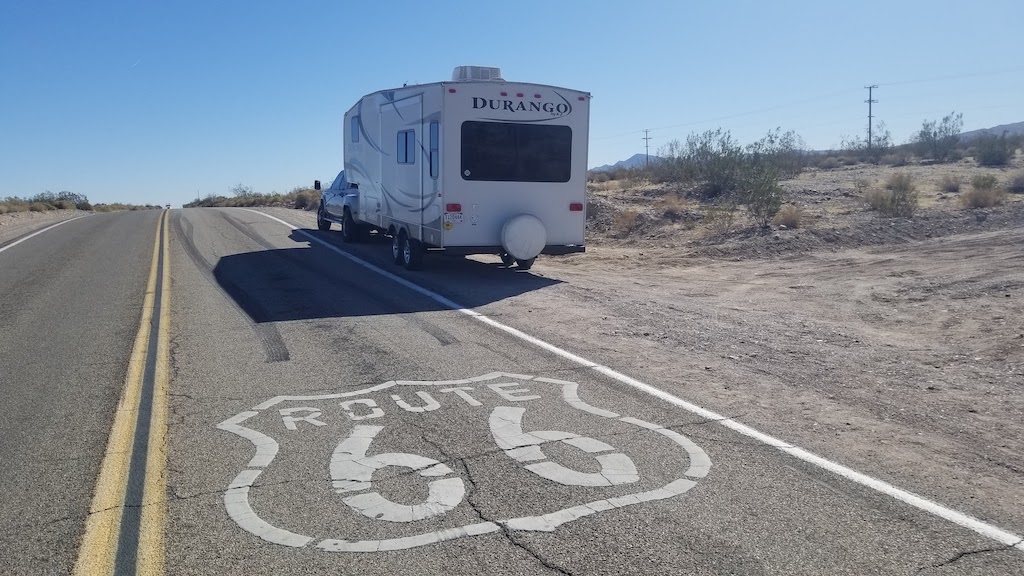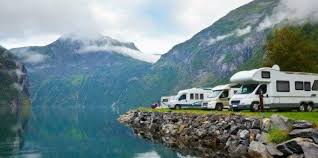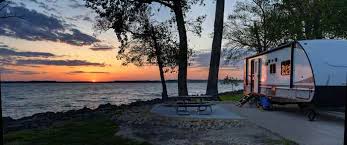
Ok, so you’ve just been driving all day looking forward to relaxing in that beautiful spot camping under the stars and and have entered the campground where you have made a booking… now what? How do you find the best site for your rig? Noisy neighbors, smelly trash bins and flooding can spoil your trip! Choose wisely: There are some tricks to finding your perfect site! We’ve made all the mistakes, had some pretty terrible spots, and now we’d love to share our advice with you, so you have a happy adventure.
First let me start by saying that sometimes you can pre-allocate your site during your reservation and have probably had the advantage of researching the best location and size of site on the park’s website. That is always the best advantage.
WHEN TO CHECK IN: If you really want that special site by the lake or river or best views there are a few tricks.
When making your reservation check to see if there is a specific check in times. Many RV parks do not allow you into the park until after the check out time (which is usually around 11 or 12 o’clock). So if this is the case, you may want to arrive early and put your RV in the holding area parking lot and walk around the campground.
With map in hand have a look around spaces that may be vacating that suit your rig. Usually there are signs that someone is leaving such as they are packing up or sometimes on their car or campsite there is a reservation receipt with the date they are departing.
PARKING: Think about what may be important to you… such as you may prefer a drive-through site, or a back-in site. These may be indicated on the campground map along with suggested sites for larger rigs. If you are in a small rig, it is customary to leave the larger sites or the large rigs or if the campground is booked, they may not find a suitable site.
LOCATION: Avoid high traffic areas if you are looking for a peaceful relaxing area. Unless you have children, it is best to stay away from playgrounds. Does your site have a picnic table or fire ring? Is the site level? If you’re in an area known for bugs, choose a campsite farthest away from mosquito-breeding standing water.
We personally do not like to be around the trash bins due to the smell, or the bathrooms (as we are self-contained) and the bathrooms and laundry can be quite busy all through the night.
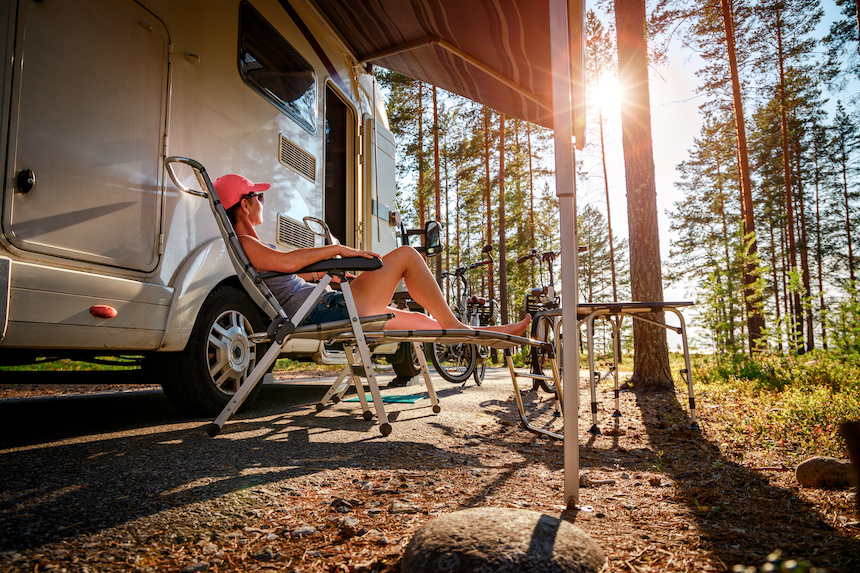
DOOR, AWNING & SLIDE OUT ORIENTATION: We check to see where our door will be facing for easy comfortable access and also privacy. You want to have plenty of level room by the entrance, free of obstructions. Is there enough room for your awing and slide outs? Where will your windows be facing. Hopefully you will have some great views and not looking right into another campers windows.
POWER: Also check the power… is it 30 or 50 amps? If you do not have the compatible amps you may require an adaptor. How far away is the power pedestal and will you require an extension cord?
DRAINAGE: Take note of where the drainage dump is located and if your hose will be long enough. Also, consider the drainage of the site itself in case of rain. Keep away from low lying areas that could flood. Is the surrounding area sloping towards your campsite? If there is any rain in the forecast, digging a canal away from your RV can help.
SUN OR SHADE: Think about the weather conditions. Is there shady trees? Great, makes it much cooler on a hot and sunny day! But check how low they may be to see if it will be an issue getting into or out of the site. Pay close attention to the health of trees around the site. In adverse weather some trees could fall down.
WILDLIFE & POISONOUS PLANTS: Also, remember to always follow the advice of the local rangers, notices and area experts on wildlife precautions.
AFTER HOURS ARRIVAL: If you arrive after hours and if you have a reservation and haven’t checked in by closing time, they will put a note on the office door telling you which campsite is yours and requesting you to come check in after they open in the morning. I would add that it’s a good idea to call the office and let them know if you plan to arrive late. That way you can know their precise procedure and they can put together an arrival pack for you with any gate codes required to enter the park. A fair number of campgrounds will allow you to simply choose a campsite and then come pay in the morning. The drawback however is you may not have the passcode to enter the restrooms or showers.
But if you have a reservation and haven’t checked in by closing time, they will put a note on the office door telling you which campsite is yours and requesting you to come check in after they open in the morning.
A fair number of campgrounds will allow you to simply choose a campsite, if you arrive without a booking after hours, and then come pay in the morning. The drawback however is you may not have the passcode to enter the restrooms or showers.
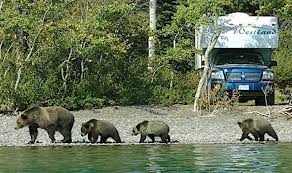
FINAL PIECES OF ADVISE: Count on critters! We all love to see the wildlife, but remember to follow standard regulations for food storage and cooking in bear country. Keep anything edible out of and away from your RV and picnic table after dark. Keeping a clean camp isn’t just because of bears. Many chipmunks and squirrels have become so used to people dropping food or outright feeding them that they may chew through any food bags or climb in a vehicle if the door is left open. Make sure that you clean thoroughly after you eat a meal because critters can smell even the smallest food particles. Do not store trash around or in your RV.

If you’re in a campground, use designated fire rings and clean up after yourself. Pay attention to fire restrictions, and if you do have a campfire, ensure it is put out before you go to sleep or leave for any reason.
On a final note, care for the environment and keep your campsite clean and safe.
If you choose your campsite wisely, you will have more fun and be safe! Happy camping!
